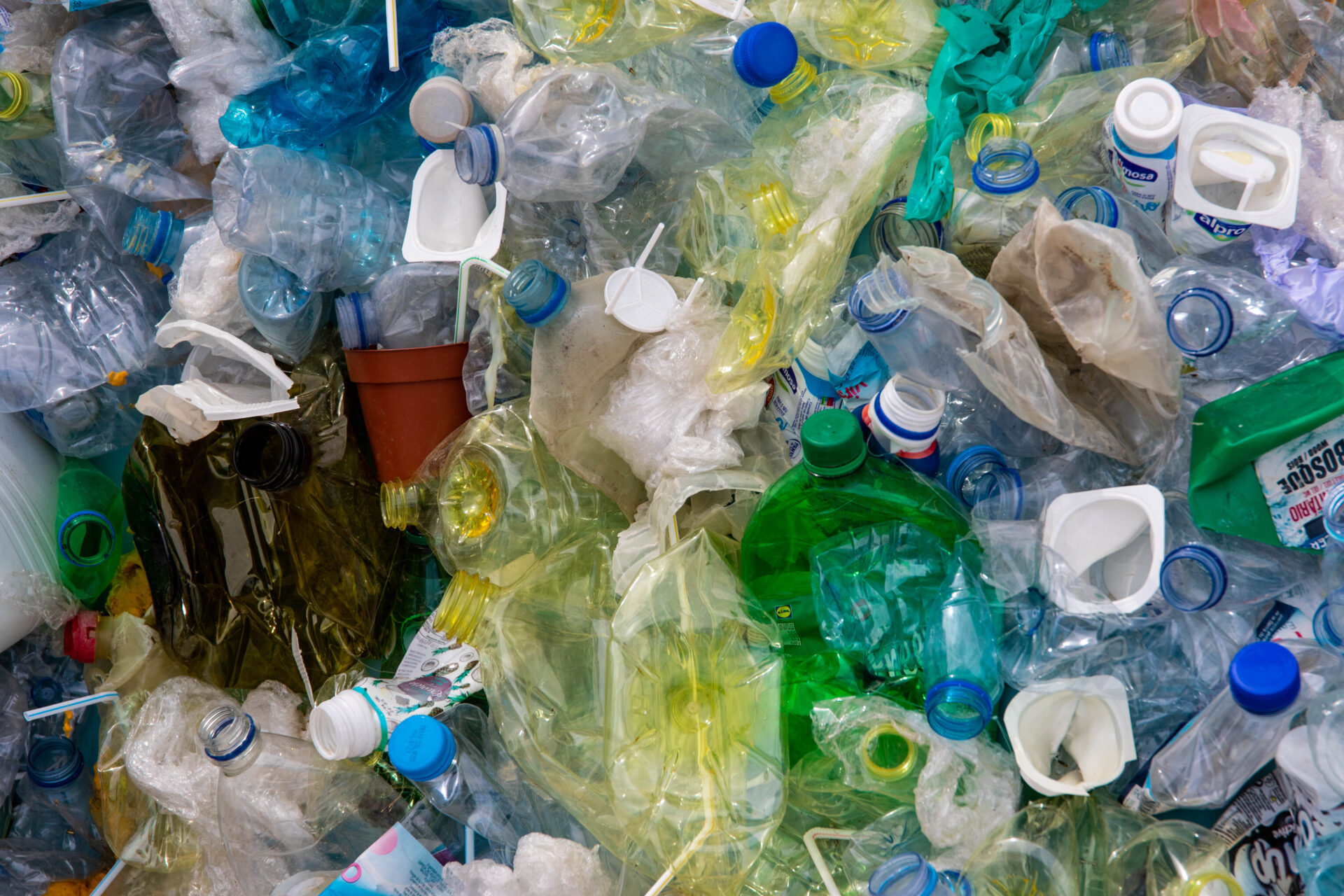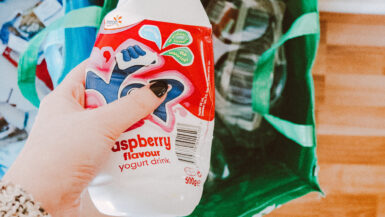As garden enthusiasts, we understand that cultivating a thriving green space is about striking a balance between nurturing the earth and reaping its bountiful rewards. In recent years, the importance of sustainable practices has become increasingly evident, and making environmentally conscious choices in our gardens is no exception. One significant way to reduce our ecological footprint is by engaging in plastic-free gardening. In this article, we explore various tips and techniques for creating a sustainable green space by eliminating plastic usage, focusing on topics such as utilizing biodegradable materials, upcycling, and supporting local nurseries. Join us as we delve into the world of plastic-free gardening and discover how you can contribute to a greener, more sustainable future.
Eco-Friendly Garden Tools: Choosing Sustainable Alternatives
In our quest to create a truly sustainable green space, it’s essential to examine not only the materials we use but also the tools we employ in our gardens. Investing in eco-friendly alternatives to common plastic-based gardening tools is a crucial step in reducing our environmental impact. In this section, we explore various options for sustainable garden tools, from biodegradable options to upcycled and locally sourced selections.
Biodegradable Garden Tools
Biodegradable materials are an excellent alternative to plastic, as they decompose naturally over time, reducing the waste that ends up in our landfills. Bamboo, for example, is a sustainable and sturdy material that can be used for various garden tools, such as rakes, trowels, and even plant markers. Coconut coir, a natural fiber derived from coconut husks, can be used for pots, hanging baskets, and mulch mats. These materials not only help in minimizing plastic waste but also introduce a natural aesthetic to your garden.
Upcycling: Giving New Life to Old Tools
Upcycling is the creative process of transforming discarded materials or products into new, functional items. Instead of purchasing new plastic-based tools, consider repurposing old items in your home or garage. For instance, transform an old wooden ladder into a plant stand, or use a worn-out metal rake as a unique garden decoration. Upcycling not only reduces waste but also cultivates a sense of resourcefulness and innovation in your gardening practices.
Supporting Local Nurseries and Artisans
By choosing to purchase your garden tools from local nurseries and artisans, you actively support small businesses and contribute to a more circular economy. Many local vendors offer handcrafted, high-quality garden tools made of metal, wood, or other sustainable materials. These tools often last longer than mass-produced plastic counterparts and can be easily repaired or maintained. Additionally, supporting local businesses reduces the carbon footprint associated with transporting garden tools over long distances.
As we strive to create a sustainable green space, selecting eco-friendly garden tools is an essential component. By opting for biodegradable materials, upcycling existing items, and supporting local businesses, we can significantly reduce our reliance on plastic and contribute to a greener future for our planet.
Organic Pest Control: Natural Solutions for a Plastic-Free Garden
In our journey towards a plastic-free garden, it is important to address the issue of pest control. Traditional methods often involve harmful chemicals and plastic packaging that can be detrimental to both the environment and the health of our garden. By seeking out natural, organic solutions, we can minimize our reliance on plastic and create a more eco-friendly space. In this section, we discuss various organic pest control techniques, including companion planting, homemade remedies, and introducing beneficial insects to your garden.
Companion Planting: An Eco-Friendly Defense
Companion planting is an organic gardening technique that involves strategically placing certain plants near each other to deter pests and promote growth. The natural scents and chemicals produced by certain plants can act as a repellent to common pests, while others may attract beneficial insects that help keep pest populations in check. For example, planting marigolds among your vegetable crops can deter nematodes, while planting basil near tomatoes can repel flies and mosquitoes. This method not only helps control pests without the use of harmful chemicals but also contributes to the overall health and biodiversity of your garden.
Homemade Remedies: DIY Solutions for Pest Control
Another plastic-free alternative to traditional pest control methods is creating your own homemade remedies. Using common household items and ingredients, you can concoct effective solutions to target specific pests in your garden. For instance, a mixture of water, dish soap, and cayenne pepper can be sprayed on plants to deter aphids and other soft-bodied insects. Or, a simple mixture of crushed garlic, water, and a few drops of dish soap can be used as a natural fungicide to prevent and treat fungal infections on plants. These homemade solutions not only reduce the need for plastic-packaged pesticides but also allow you to control the ingredients used in your garden, ensuring a healthier environment for both your plants and the surrounding ecosystem.
Introducing Beneficial Insects: Nature’s Pest Control
Nature has its own way of maintaining balance, and one such method is through the presence of beneficial insects. By introducing these helpful creatures to your garden, you can naturally control pest populations without resorting to chemical-laden products or plastic waste. For example, ladybugs are known to consume large numbers of aphids, while praying mantises are effective predators of many different types of insects. To attract these helpful insects, consider planting flowers and herbs that provide nectar and shelter, such as dill, fennel, and yarrow. This approach not only benefits your garden’s health but also promotes biodiversity and supports local ecosystems.
By implementing organic pest control techniques such as companion planting, homemade remedies, and introducing beneficial insects, we can create a plastic-free garden that thrives without the need for harmful chemicals or environmentally damaging practices. These natural solutions not only benefit our immediate green spaces but also contribute to the overall health of our planet.
Composting and Mulching: Waste-Free Methods for Enriching Soil
Cultivating a healthy, vibrant garden requires fertile soil that is rich in nutrients. In our pursuit of a plastic-free garden, it is essential to adopt sustainable practices that not only nourish the soil but also minimize waste. Composting and mulching are two such methods that contribute to a thriving green space while reducing our reliance on plastic-packaged fertilizers and soil amendments. In this section, we delve into the benefits and techniques of composting and mulching, and how they can help you achieve a sustainable and plastic-free garden.
The Magic of Composting: Transforming Waste into Nutrient-Rich Soil
Composting is the process of breaking down organic materials, such as food scraps and yard waste, into a nutrient-rich, humus-like substance that can be used to enrich the soil in your garden. This eco-friendly practice not only diverts waste from landfills but also reduces the need for synthetic fertilizers, which often come in non-recyclable plastic packaging. To begin composting, simply designate a specific area in your garden or purchase a compost bin made from sustainable materials. Then, add a balanced mix of brown (carbon-rich) materials, such as dried leaves and twigs, and green (nitrogen-rich) materials, like fruit and vegetable scraps, grass clippings, and coffee grounds. Regularly turning the compost pile and maintaining the proper moisture levels will ensure a successful decomposition process, ultimately yielding a nutrient-dense soil amendment for your garden.
Mulching for Success: An Eco-Friendly Approach to Soil Preservation
Mulching involves covering the soil surface with organic materials, such as wood chips, straw, or grass clippings, to provide multiple benefits to your garden. Mulch helps to retain moisture in the soil, suppress weed growth, and regulate soil temperature, all while eventually breaking down and adding valuable nutrients back into the soil. By utilizing organic, locally sourced materials as mulch, you can avoid the need for plastic weed barriers and synthetic mulches that contribute to plastic pollution. Additionally, mulching can help reduce the need for chemical weed killers, which often come in plastic containers. To apply mulch in your garden, simply spread a layer of organic material 2 to 4 inches thick around your plants, taking care to avoid direct contact with plant stems to prevent rot and disease.
By embracing composting and mulching techniques, you can create a thriving, sustainable garden that relies less on plastic products and more on the natural processes of the earth. These waste-free methods for enriching your soil not only benefit your immediate green space but also contribute to the overall health of our planet by reducing waste and promoting a circular economy.
Water Conservation Techniques: Efficient Irrigation for Green Spaces
A crucial aspect of plastic-free gardening is the responsible use of water resources. By employing efficient irrigation techniques, we can not only conserve water but also reduce the need for plastic-based watering systems and accessories. In this section, we explore various water conservation methods that can help you maintain a healthy and sustainable garden while minimizing your environmental impact.
Collecting Rainwater: A Natural Source for Garden Irrigation
Utilizing rainwater for garden irrigation is both an eco-friendly and cost-effective way to conserve water. By collecting rainwater in barrels or other large containers, you can reduce your reliance on municipal water supplies and decrease the need for plastic hoses and sprinklers. Additionally, rainwater is naturally free of chemicals like chlorine, making it an ideal source of water for your plants. To set up a rainwater collection system, simply place rain barrels or containers under your roof’s downspouts and use the collected water to irrigate your garden during dry spells.
Drip Irrigation: A Targeted Approach to Watering
Drip irrigation is a precise and efficient watering method that delivers water directly to the root zone of your plants, reducing water waste and the need for plastic-based sprinklers. This system involves the use of porous hoses or drip emitters that release water slowly and consistently, minimizing evaporation and runoff. Although some drip irrigation systems are made from plastic materials, there are eco-friendly alternatives available, such as those made from recycled rubber or biodegradable materials. By implementing drip irrigation, you can maintain a healthy and well-hydrated garden while reducing your water consumption and reliance on plastic products.
Timing and Watering Techniques: Maximizing Water Efficiency
The timing and technique of watering your garden can have a significant impact on water conservation. By watering your plants during the cooler hours of the day, such as early morning or late evening, you can minimize evaporation and ensure that your plants receive the most benefit from the water applied. Additionally, using a watering can or a hose with a shut-off nozzle allows you to control the flow of water and target the plants that need it most, reducing waste and the need for plastic sprinklers. Adopting mindful watering practices not only helps conserve water but also contributes to the overall health and vitality of your garden.
By implementing water conservation techniques such as rainwater collection, drip irrigation, and mindful watering practices, you can create a sustainable, plastic-free garden that thrives with minimal environmental impact. These methods not only promote the responsible use of water resources but also help reduce our reliance on plastic products, contributing to a greener and more sustainable future for our planet.
Edible Landscaping: Growing Your Own Plastic-Free Produce
One of the most rewarding aspects of gardening is the ability to grow your own fruits, vegetables, and herbs. By incorporating edible plants into your garden design, you can not only create a beautiful, lush space but also reduce your reliance on plastic-packaged produce from grocery stores. In this section, we explore the concept of edible landscaping and share tips for successfully growing your own plastic-free produce.
Integrating Edible Plants into Your Garden Design
Edible landscaping is the practice of incorporating food-producing plants into your garden, blending aesthetic appeal with practical functionality. By thoughtfully incorporating edible plants into your garden design, you can create a visually stunning space that also provides fresh, nutritious produce for your family. Consider mixing fruit trees, berry bushes, and perennial vegetables with your existing ornamental plants to create an attractive, bountiful landscape. Additionally, many common herbs, such as rosemary, lavender, and sage, not only provide culinary benefits but also serve as attractive, fragrant additions to any garden.
Choosing the Right Plants for Your Climate and Space
When planning your edible garden, it’s essential to select plants that are well-suited to your local climate and available space. Research the hardiness zones and growing conditions for each plant to ensure a successful harvest. If you have limited space or live in an urban environment, consider utilizing containers, vertical gardening techniques, or community gardens to grow your own produce. This not only allows you to enjoy the benefits of homegrown fruits and vegetables but also encourages a sense of community and connection with fellow gardeners.
Maintaining Your Edible Landscape: Organic and Sustainable Practices
To cultivate a thriving edible landscape that is also plastic-free, it’s important to adopt organic and sustainable gardening practices. Avoid using synthetic fertilizers and pesticides, which often come in plastic packaging, and opt for natural, homemade solutions instead. Composting and mulching, as mentioned earlier, are excellent ways to enrich your soil without relying on harmful chemicals or plastic products. Additionally, practice crop rotation and companion planting to maintain soil fertility and deter pests naturally, contributing to the overall health of your garden and the environment.
Growing your own plastic-free produce through edible landscaping not only provides a sustainable source of fresh, nutritious food but also enhances the beauty and functionality of your garden. By thoughtfully integrating edible plants into your garden design, selecting appropriate plants for your climate and space, and employing organic gardening practices, you can create a thriving, sustainable green space that is both visually appealing and environmentally responsible.





Leave a reply